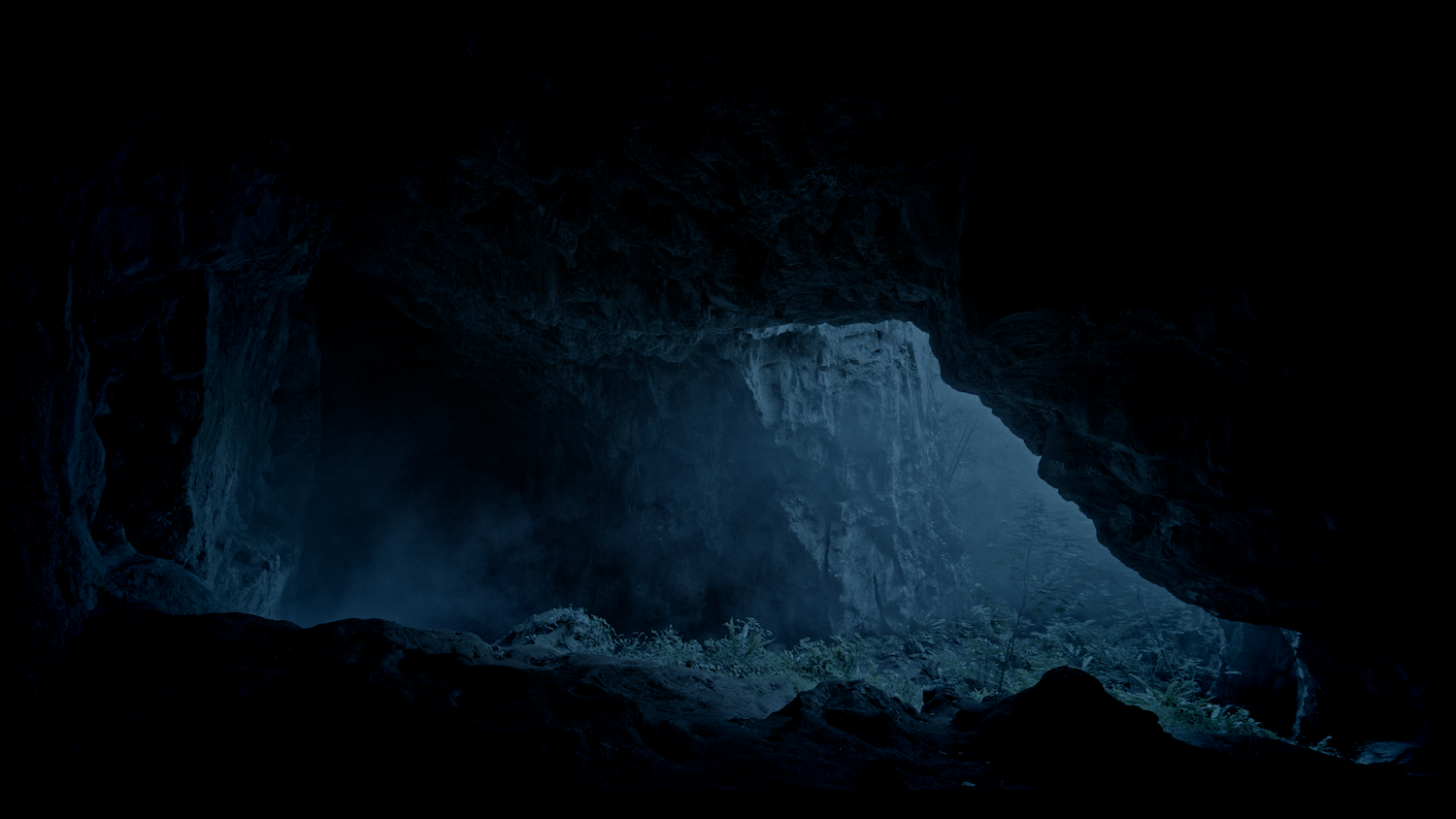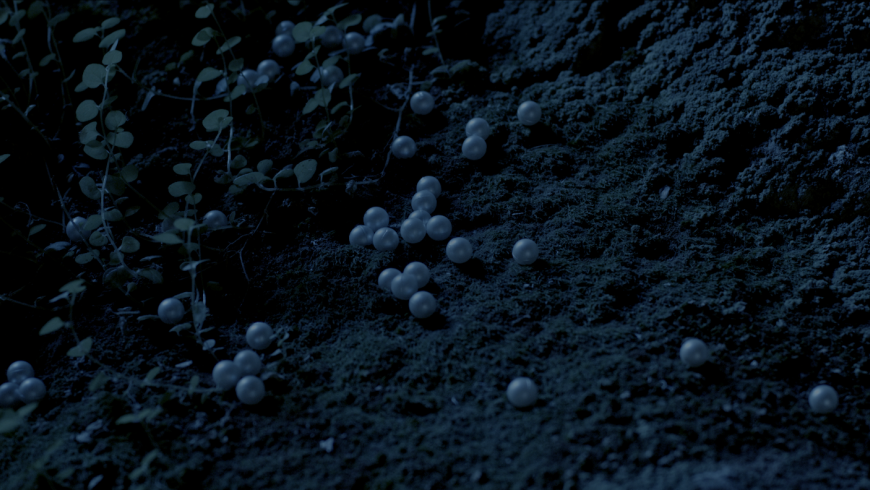Echoes from the Void
Gary Zhexi Zhang
Writer and artist Gary Zhexi Zhang traces the underlying meanings and associations of Michael Ho’s Echoes from the Void.
Projects
Watch Michael Ho's Echoes from the Void on FVU Watch
Old skymaster, you’re getting on
Your ears are deaf, your eyes are gone.
— Ming Dynasty folk song
Michael Ho’s Echoes from the Void began as an impressionistic film treatment written at the height of the COVID-19 pandemic, during which rumour, conspiracy, and powerful uncertainty pervaded all aspects of social existence. Lives were not only unmoored by the virus itself, but also the way in which it connected individual anxieties with worldly conditions, heightened by experiences of isolation and the cacophony of information and media. As the planetary drama unfolded at pace, globalisation manifested as an acute psychological, temporal and physical state of being, perhaps for the first time in most of our lives. In particular, Ho reflected on how the toxic atmosphere of fear and suspicion quickly turned into acute racism against the East Asian diaspora, a resurgence of the ‘yellow peril’ at the turn of the 20th century, in which the spectre of the East was imagined as a malignant other, an existential psychic threat to the Western subject.
Almost two years on, the resulting film is a ghostly, meditative work, more introspective than directly political, with undertones of gothic horror and Chinese folklore. Inspired in part by Alvin Lucier’s seminal 1969 sound piece, I am Sitting in a Room (1969), in which the composer’s speech is re-recorded until the sound of his words dissolve into the resonant frequencies of the room, Echoes from the Void centres its drama on the dissolution and distortion of language and meaning. But Ho is less interested in the formal qualities of sound than in the emotional and psychological space of discourse.
Reminiscent of the enigmatic, densely foliaged paintings that the artist made with his late collaborator, Chiyan Ho, Echoes features a nameless figure in a twilit forest landscape. Echoes was shot between two of England’s ancient caves: Ash Hole Cavern in Devon, and Thor’s Cave in the Peak District, which have both borne witness to human inhabitation since at least the Bronze age. In a film of few ‘characters’, it is not the human figure (played by Ho himself) but the vibrant aliveness of these time-worn caverns that becomes Echoes’ protagonist and narrative agent. A camera creeps over the cave’s baroque gnarls and crevices—at turns jagged, vermicular and soapy-smooth—observing not a monolith but a body in amorphous fluctuation over geological time. The philosopher Michel Serres once imagined another camera, just across the English Channel from Ho’s cave, with its lens trained on the rocky coast of Brittany over millions of years: “we would see a flame”.
The figure in the forest shouts into the trees. “Covid is a hoax! … The vaccine alters your DNA! … The media never tells the truth!”. Standing alone in silhouette, his expressions are more functional than dramatic. His voice sounds with urgency but his body remains curiously impassive, calling out his theories to no-one in particular — into the titular void. Does he seek to provoke a response? Does he believe anyone is really listening? Is this resignation or catharsis? Despite the futility of his situation, the void sounds back with a cascade of echoes and imbuing his words with an ominous resonance. The reverberations shiver from the depths of the cave out into the forest, before merging into the haunting frequencies and metallic chimes of Flora Yin Wong’s soundtrack. As if triggering an avalanche, white pearls begin to emerge from the stone, first in a trickle, then in their dozens, spilling out of the cavern, fresh as anything against the mottled ground. The camera is drawn to the cavern’s manifold orifices, as pearls secrete from their depths and skitter along their rims. They tumble down the walls and scatter into the forest floor, glistening like moths’ eggs in spawning season under the light of the moon. In Chinese folklore, the brightness of pearls and moonlight often intermingle, with the latter thought to be the source of the pearl’s brightness, and the lunar phases a result of a dragon eating the moon, typically represented by a pearl. As with his work on the canvas, Ho’s painterly symbolism is at once heavy and cryptic. All the while, a dense fog intrudes on the scene, oozing through the caverns and washing over the foliage, reminding us that we are firmly in the Zone, that eerie, sentient place where landscape is seduced by metaphor.
Ho’s adoption of a folkloric, hallucinatory register — with shades of Apichatpong Weerasethakul’s ghost stories, wuxia (martial arts) forest scenes and of course, Tarkovsky — to explore contemporary belief and suspicion suggests a reality that is already powerless to the untethering of truth from fiction. His final cry, “The moon doesn’t exist!”, evokes a deeply poetic solipsism while also recalling that classic amongst 20th century conspiracy theories, the faking of the moon landing. The allegorical language of Echoes from the Void alludes to the possibility of a denouement — a moral, perhaps, of this fable — but no such resolve appears. The fog emerges from the darkness, drifts over the dusky forest, and clears again, leaving the moonlit pearls to their infestation.
The media scholar Lars Ole Sauerberg coined ‘the Gutenberg Parenthesis’ to propose that late 20th century media (culminating with the web) represents a return to a pre-modern, pre-print oral culture which follows the 500-year reign of the book. In other words, as Sauerberg and medievalist Tom Pettitt suggest, “the future is medieval”. Fundamental to this pre- and post-Gutenberg culture is the folkloric mutability of information and narrative: where the printed book represented a container of meaning which could be mechanically reproduced en masse, an oral culture subsists on an extensive game of Chinese Whispers, where stories are rewritten every time they’re told. As narratives percolate through the memetic cultures and algorithmic networks of social media, every reader is also a writer of proliferating collective narratives. Like the orality of pre-literate times, contemporary ‘writing’ across digital media partakes in a powerful if transient flow of language and feeling. (It is unlikely, after all, that anything that exists on the internet today will outlast a printed volume.) After the parenthesis, the undoing of stable containers of meaning heralds a media culture that favours resonance and reverberation over fixed points of reference, a diversity of opinion coalescing around innumerable claims to truth.
In Latinate languages, lunacy is a state of mind attributed to the waxing and waning of the moon. The angsty cries of the film’s solitary figure are met with a cacophony which serves only to heighten his isolation. He looks a little lost, like Orpheus shouting mindlessly into the mouth of the underworld, to which his lover has long been lost. In Echoes, the looming fog and invading pearls allude to the arrival of a sinister presence, but it is the scarred, molten forms of the caves they move through which remind us that, perhaps, there was no stable structure to begin with, only a network of interlinked voids shaped in time.
—
Text commissioned by Film and Video Umbrella as part of the release of Echoes from the Void by Michael Ho, commissioned by Film and Video Umbrella as part of BEYOND #2.


